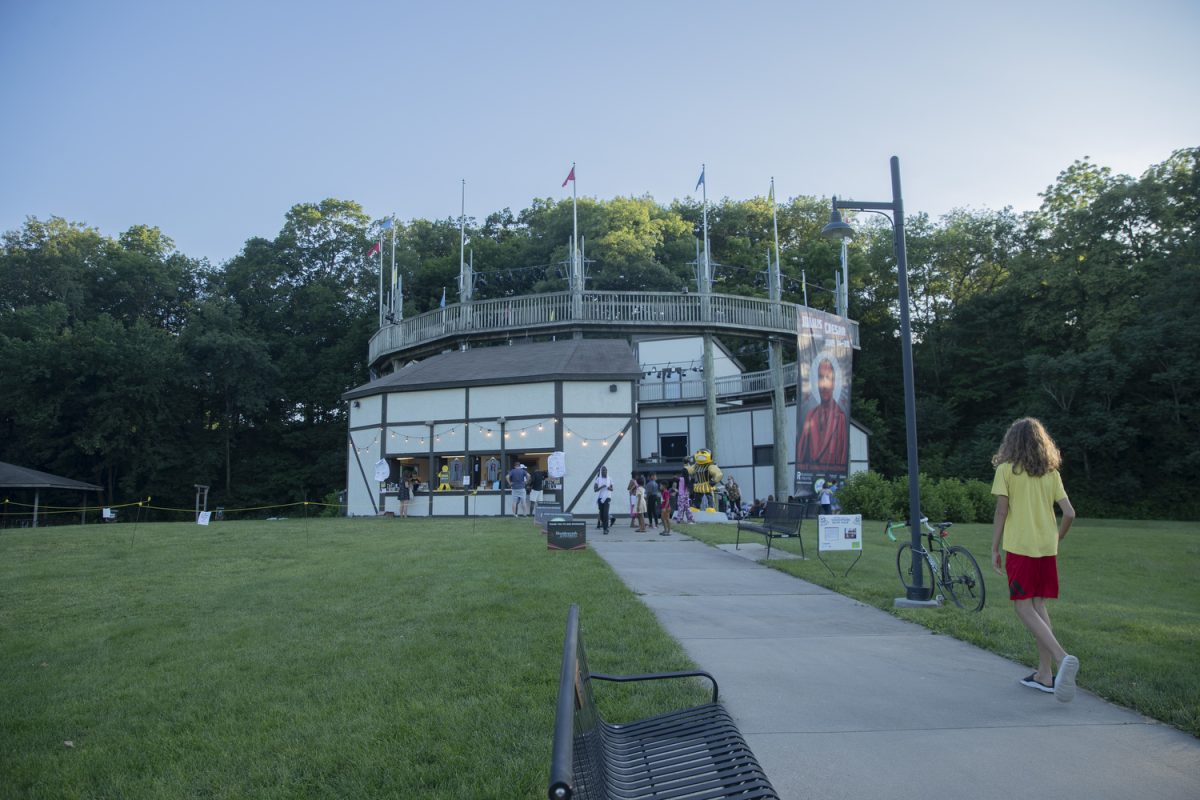Everyone is familiar with William Shakespeare’s “Julius Caesar” in some capacity — whether it be through history class or English class — but this familiarity is something Riverside Theatre capitalizes on every summer.
Since 2000, Riverside has presented a new take on a Shakespeare classic at Iowa City’s Lower City Park. This year, though, the massive amphitheater designed like a stage Shakespeare’s plays would have been performed on underwent several changes.
A large three-story structure around the back of the stage grants the production a more robust backstage as well as better access to catwalks, entrances, and exits, and the space as a whole.
“A more professional facility means we can dedicate more resources to what the audience sees: the stage,” said Riverside Theatre Producing Artistic Director and “Julius Caesar” director Adam Knight.
These stage modifications were important in bringing “Julius Caesar” together since the production features one of the largest casts Riverside has ever staged and also immerses the audience in a Shakespeare story displaced in time.
“With Shakespeare, you have so much freedom we as artists can sink our teeth into,” Knight explained. This interpretation takes place between World War I and World War II in Eastern Europe as the region witnesses the rise of authoritarianism, much like the Roman historical figures in the play.
“It’s a story about a population that gets swayed to think a certain way and the few people who rise to stop that tide of history,” Knight said. “That sort of story mirrors our time where media influences people more than ever.”
Shakespeare’s stories are no stranger to receiving setting shifts, as Knight points out. The original Julius Caesar staging wasn’t set in Rome, and the costumes were contemporary. Given how malleable the scripts are, it only makes sense that they would constantly be shifting periods and settings to resonate with a modern audience.
“Experiencing that common story with people, especially in a time like now when we’re very divided, is important,” said Brutus actor Martin Andrews.
That communal audience experience is always top of mind for all involved in the production, something that can sometimes be difficult with such a large performing space.
“It changes everything. It’s especially challenging when you’re on the stage feeling a more intimate scene,” Andrews said. “When you’re on your knees with your acting partner, you have to remember the people in the back can’t see your facial expression.”
Newly installed sound systems aid in this struggle, but so does the uniquely large cast of “Julius Caesar” as when more actors fill the stage, the energy ramps up. When performers have more people to work off of, there’s an intangible feeling of energy that comes through in the performance and in the audience.
“Shakespeare is ingrained in our cultural fabric,” states Andrews.
With performances like “Julius Caesar,” Riverside and its consistent seasonal audience of Shakespeare fans prove why that is. Riverside’s newly improved performance space sets a foundation for how the series will develop heading into its 25th anniversary next year.
“[The space] allows us to tap into the larger-than-life stories that make Shakespeare so great, to utilize that scale and let performers stretch themselves,” said Adam Knight. “Iowa City just gets it. Great theater entertains us, but it also creates these inspiring feelings that make community growth possible.”



